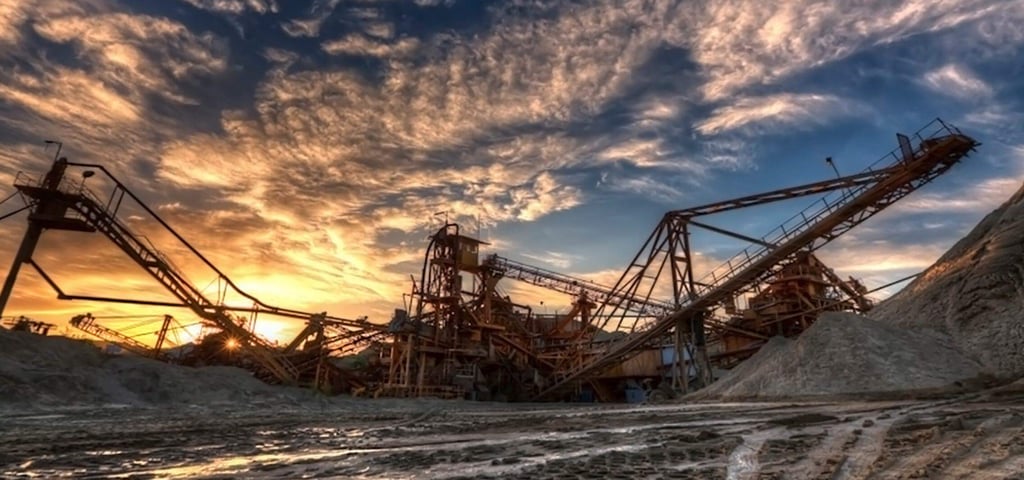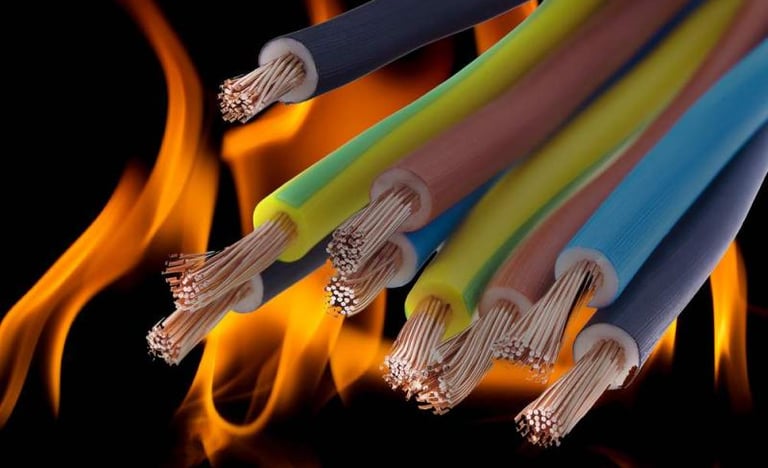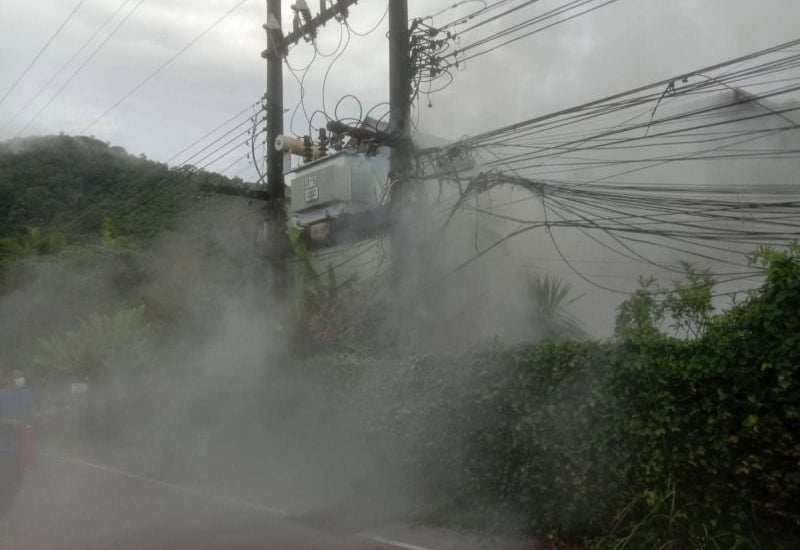Anhui Feichun Special Cable Co.,Ltd Li.wang@feichuncables.com
Fire-Resistant Mining Cables: Safeguarding South Africa’s Mines
Discover why fire-resistant mining cables are vital for South African mines, ensuring safety, compliance with SANS 1520-1, and NRCS certification while reducing fire risks and downtime. Learn how these cables protect miners and equipment.
Li.wang@Feichun Cable
7/4/20257 min read


South Africa’s mining industry is the backbone of the nation’s economy, contributing significantly to GDP, employment, and infrastructure development. From the gold and platinum mines of the Witwatersrand to the coal fields of Mpumalanga, mining operations rely heavily on robust electrical systems to power machinery, ventilation, and lighting. However, the harsh and hazardous underground environments pose unique challenges, particularly the risk of fires. Fire-resistant mining cables, designed to withstand extreme conditions, are critical to ensuring the safety of personnel and the continuity of operations. These cables, compliant with South African standards like SANS 1520-1 and certified by the National Regulator for Compulsory Specifications (NRCS), are not just equipment—they are lifesavers. This article explores why fire-resistant cables are indispensable in South African mines, delving into fire risks, regulatory requirements, and the benefits of using these cables, while addressing common questions about their importance.
Fire Risks in South African Mining Environments
Mining environments in South Africa are inherently high-risk due to a combination of geological, operational, and environmental factors. Underground mines, in particular, face unique challenges that heighten the potential for fires. Flammable gases, such as methane, are often present in coal and gold mines, creating an explosive atmosphere if ignited. Coal dust, prevalent in Mpumalanga’s coal mines, can form combustible clouds that ignite with even a small spark. Additionally, the high electrical loads required to power heavy machinery, such as continuous miners and conveyor systems, increase the risk of electrical faults, short circuits, and overheating.
A real-world example of these risks was the 2025 incident at Sibanye-Stillwater’s Kloof gold mine, where a shaft incident trapped 260 miners underground. While no injuries were reported, the event underscored the precarious nature of underground mining and the potential for electrical faults to escalate into catastrophic fires. Short circuits in poorly maintained or non-compliant cables can generate sparks, igniting flammable materials and leading to fires that spread rapidly in confined spaces. Overheating, often caused by overloaded circuits or aging cables, can degrade insulation, exposing live wires and increasing fire risks. These hazards not only endanger miners but also threaten costly equipment and operational continuity.
The confined nature of underground mines exacerbates these risks. Limited ventilation can cause smoke and toxic fumes from fires to accumulate quickly, reducing visibility and hindering evacuation efforts. In 2025, the Mine Health and Safety Act (MHSA) emphasized fire prevention through mandatory Codes of Practice, highlighting the growing concern over fire-related incidents in South African mines. Without adequate fire-resistant measures, a single electrical fault can lead to devastating consequences, making the choice of cables a critical decision for mine operators.
Strict Fire Resistance Requirements in South Africa
South Africa’s mining industry operates under stringent regulations to ensure safety and compliance. The South African National Standard (SANS) 1520-1 governs flexible cables for use in mining, specifying requirements for fire resistance, durability, and performance under extreme conditions. These cables must withstand high temperatures, mechanical stress, and exposure to chemicals, ensuring they remain functional during emergencies. The National Regulator for Compulsory Specifications (NRCS) oversees certification, requiring cables to meet SANS 1520-1 standards before they can be used in mines. This certification process involves rigorous testing to verify that cables can resist fire propagation, maintain circuit integrity, and emit minimal smoke and toxic fumes.
The importance of these standards cannot be overstated. SANS 1520-1 ensures that cables are constructed with fire-retardant materials, such as cross-linked polyethylene (XLPE) or ethylene propylene rubber (EPR), which are designed to prevent fire spread and maintain functionality at temperatures exceeding 1,000°C for short periods. These materials also reduce the emission of hazardous gases, which is critical in confined underground spaces where smoke inhalation poses a significant risk. The NRCS certification process further ensures that manufacturers adhere to these standards, providing mine operators with confidence that their cables meet safety requirements.
Recent regulatory developments, such as the Guidelines for Mandatory Codes of Practice for Fire Prevention published in June 2025, underscore the government’s commitment to enhancing safety in the mining sector. These guidelines, effective from October 2025, mandate employers to implement fire prevention strategies, including the use of certified fire-resistant cables. Non-compliance can result in hefty fines, operational shutdowns, or legal action under the MHSA, emphasizing the need for mining companies to prioritize certified cables to meet regulatory requirements and protect their workforce.
The Role of Fire-Resistant Cables in Mine Safety
Fire-resistant cables play a pivotal role in safeguarding both personnel and equipment in South African mines. Their primary function is to maintain circuit integrity during a fire, ensuring that critical systems, such as ventilation, lighting, and emergency communication, remain operational. This is crucial for miner safety, as it provides additional time for evacuation and rescue operations. For example, fire-resistant cables can power emergency lighting, guiding miners to safety in smoke-filled environments, or maintain ventilation systems to prevent the buildup of toxic fumes.
In terms of personnel protection, fire-resistant cables reduce the risk of deadly fires by preventing flame propagation and minimizing smoke production. Traditional cables with PVC insulation can release thick, toxic smoke when exposed to fire, posing a severe health hazard. In contrast, fire-resistant cables, compliant with SANS 1520-1, use low-smoke, zero-halogen (LSZH) materials, which emit minimal smoke and non-toxic gases. This is particularly important in underground mines, where escape routes are limited, and smoke inhalation can be fatal within minutes.
For equipment protection, fire-resistant cables ensure that critical mining machinery remains operational during emergencies. In high-voltage continuous mining machines (HVCMMs), for instance, cables must withstand extreme conditions without failing. The Mine Safety and Health Administration (MSHA) standards, referenced globally, highlight the importance of regular testing and maintenance of such cables to prevent faults. In South Africa, SANS 1520-1 cables are designed to endure mechanical stress, abrasion, and high temperatures, reducing the likelihood of equipment failure and costly downtime. By maintaining circuit integrity, these cables prevent cascading failures that could halt operations and lead to significant financial losses.
Benefits of Fire-Resistant Cables for Mining Operations
The adoption of fire-resistant cables offers multiple benefits for South African mining operations, extending beyond safety to include compliance, reliability, and cost savings.
Compliance with Safety Regulations
Using SANS 1520-1-compliant and NRCS-certified cables ensures that mining companies meet the stringent requirements of the MHSA and other regulations. The recent Guidelines for Mandatory Codes of Practice for Fire Prevention, effective October 2025, emphasize the need for fire-resistant materials in all mining operations. Compliance not only avoids penalties but also enhances a company’s reputation as a responsible operator committed to safety. For example, the Palabora Mining Company’s 2025 agreement with Mzansi Energy Consortium for sustainable energy projects highlights the industry’s shift toward safer and greener practices, where certified cables play a crucial role.
Increased Reliability and Operational Stability
Fire-resistant cables enhance the reliability of electrical systems, ensuring uninterrupted power supply to critical equipment. In underground mines, where downtime can cost millions of rands per hour, reliable cables are essential. These cables are designed to withstand harsh conditions, including high humidity, chemical exposure, and mechanical stress, ensuring consistent performance. By reducing the risk of electrical faults, fire-resistant cables minimize unplanned outages, boosting operational efficiency.
Long-Term Cost Savings
While fire-resistant cables may have a higher upfront cost than standard cables, their durability and safety features lead to significant long-term savings. By preventing fire-related equipment damage, these cables reduce repair and replacement costs. Additionally, they minimize downtime caused by electrical faults or fires, ensuring continuous production. The Minerals Council South Africa (MCSA) noted in 2025 that a thriving mining industry is critical for economic stability, and investing in high-quality cables is a strategic move to protect assets and maintain profitability.
Conclusion
Fire-resistant mining cables are not just a regulatory requirement but a cornerstone of safety and efficiency in South Africa’s mining industry. The high-risk environment of underground mines, coupled with stringent regulations like SANS 1520-1 and NRCS certification, underscores the need for cables that can withstand extreme conditions while protecting miners and equipment. These cables reduce the risk of deadly fires, ensure operational continuity, and offer long-term cost savings, making them an indispensable investment for mining companies. As South Africa continues to strengthen its mining safety regulations, as evidenced by the 2025 Guidelines for Fire Prevention, the importance of certified fire-resistant cables cannot be overstated. Mining companies must prioritize safety, compliance, and operational efficiency by choosing high-quality, fire-resistant cables to safeguard their workforce and assets, ensuring a safer and more sustainable future for the industry.
FAQ: Why Fire Resistance in Mining Cables is Crucial for South African Mines
Q: Why are fire-resistant cables necessary in South African mines?
A: Fire-resistant cables are essential due to the high fire risks in mining environments, such as flammable gases, dust, and high electrical loads. These cables, compliant with SANS 1520-1, prevent fire propagation, maintain circuit integrity, and emit minimal smoke, ensuring safer evacuations and protecting equipment.
Q: What is SANS 1520-1, and why is it important?
A: SANS 1520-1 is a South African standard governing flexible mining cables. It ensures cables are fire-resistant, durable, and safe for use in harsh mining conditions. Compliance with this standard, along with NRCS certification, is mandatory to meet safety regulations and prevent fire hazards.
Q: How do fire-resistant cables protect miners?
A: These cables maintain power to critical systems like lighting and ventilation during fires, aiding evacuation. They also use low-smoke, zero-halogen materials, reducing toxic smoke and improving visibility in confined spaces, which is critical for miner safety.
Q: Are fire-resistant cables cost-effective for mining companies?
A: Yes, while they may have a higher initial cost, fire-resistant cables save money in the long run by preventing fire-related damage, reducing downtime, and ensuring compliance with regulations, which avoids fines and legal issues.
Q: How do recent regulations affect the use of fire-resistant cables?
A: The 2025 Guidelines for Mandatory Codes of Practice for Fire Prevention, effective October 2025, mandate the use of fire-resistant materials in mines. This reinforces the need for SANS 1520-1-compliant cables to ensure safety and regulatory compliance.
Q: Can non-compliant cables be used in South African mines?
A: No, using non-compliant cables risks non-compliance with the MHSA and NRCS regulations, leading to fines, operational shutdowns, or increased fire risks. Only SANS 1520-1-certified cables should be used to ensure safety and compliance.





Email Address: Li.wang@feichuncables.com
© 2025. All rights reserved.


One-click to Quickly Contact
Products
Offshore & Marine Cable
XLPE Cable
Contact
Company
Location:
Building A Private Science and Technology Park, Hefei Economic and Technological Development Zone, Anhui Province, China
